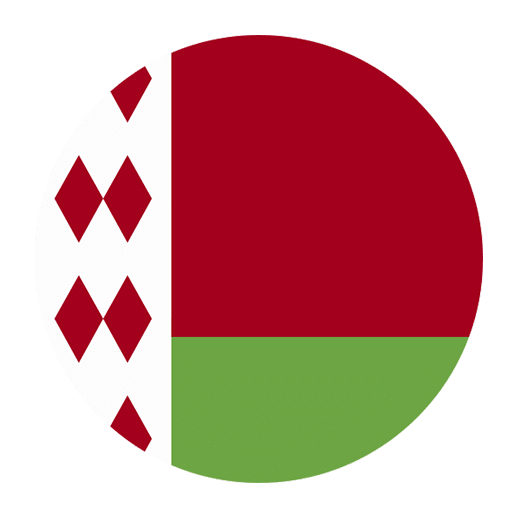Belarusian, the official language of Belarus, is a member of the East Slavic language group, which also includes Russian and Ukrainian. Despite its relatively small geographic region, Belarusian is a language rich in dialectal diversity. Understanding these dialects not only provides insights into the cultural and historical tapestry of Belarus but also enhances one’s appreciation and mastery of the language. This article aims to offer a comprehensive guide to the different Belarusian dialects, their unique characteristics, and their significance in the broader context of language learning.
Overview of Belarusian Dialects
Belarusian dialects can broadly be divided into two major groups: the North-Eastern and the South-Western dialects. These groups are further subdivided into various sub-dialects, each with its own unique features. The boundary between these two primary dialect groups is known as the Aŭtoŭka-Harodnia line, running approximately from the town of Aŭtoŭka to Harodnia.
North-Eastern Dialects
The North-Eastern dialect group includes the dialects spoken in the eastern and northern parts of Belarus. These dialects are generally considered closer to Standard Belarusian, which is based on the Minsk and Viciebsk variants.
Characteristics:
1. **Pronunciation:** Vowels tend to be pronounced more clearly and distinctly compared to the South-Western dialects. For example, the pronunciation of the vowel “a” is more open and distinct.
2. **Consonant Clusters:** North-Eastern dialects often retain more complex consonant clusters, which can be simplified in South-Western dialects.
3. **Lexical Items:** There is a notable presence of words and expressions that are closer to Russian, reflecting historical and geographical proximity.
Sub-Dialects:
1. **Viciebsk Dialect:** Spoken in the Viciebsk region, this sub-dialect is considered one of the closest to Standard Belarusian. It features clear vowel articulation and a relatively conservative phonetic system.
2. **Minsk Dialect:** The Minsk dialect forms the basis for Standard Belarusian. It is characterized by a balanced mix of features from both North-Eastern and South-Western dialects, making it a crucial point of reference for learners.
South-Western Dialects
The South-Western dialect group encompasses the dialects spoken in the southern and western parts of Belarus, particularly in the Brest and Hrodna regions. These dialects have been influenced by Polish and Ukrainian due to historical and geographical factors.
Characteristics:
1. **Pronunciation:** Vowels in South-Western dialects are often more nasalized and less distinct than in North-Eastern dialects. This is particularly true for the vowels “e” and “o.”
2. **Consonant Simplification:** Consonant clusters are frequently simplified, making the speech sound smoother and more fluid.
3. **Lexical Items:** There is a significant presence of words and expressions borrowed from Polish and Ukrainian, reflecting the region’s historical ties.
Sub-Dialects:
1. **Brest Dialect:** This sub-dialect is spoken in the Brest region and exhibits a strong influence from Polish. It features nasalized vowels and a simplified consonant system.
2. **Hrodna Dialect:** The Hrodna dialect shows a blend of Polish and Ukrainian influences, with distinctive vowel pronunciations and a unique set of lexical items.
Historical Context
Understanding the historical context of Belarusian dialects is crucial for appreciating their current forms and variations. The region that is now Belarus has been a crossroads of various cultures and political entities, including the Grand Duchy of Lithuania, the Polish-Lithuanian Commonwealth, and the Russian Empire. Each of these entities has left its mark on the Belarusian language.
The Grand Duchy of Lithuania:
During the period of the Grand Duchy of Lithuania, the Belarusian language, then referred to as “Ruthenian,” was one of the official languages of the state. This period saw the development of a written tradition and the standardization of various dialects.
The Polish-Lithuanian Commonwealth:
The union with Poland brought significant Polish influence, particularly in the western and southern regions. This influence is still evident today in the lexical and phonetic features of the South-Western dialects.
The Russian Empire:
The incorporation of Belarus into the Russian Empire resulted in increased Russian influence, particularly in the eastern and northern regions. This influence is reflected in the North-Eastern dialects, which show more similarities to Russian in terms of vocabulary and pronunciation.
Dialectal Features in Grammar and Syntax
While phonetic and lexical differences are the most immediately noticeable features of Belarusian dialects, there are also subtle variations in grammar and syntax. These variations can provide valuable insights for language learners aiming to achieve a deeper understanding of the language.
Verb Conjugation:
One of the areas where dialectal differences are evident is in verb conjugation. For example, in some South-Western dialects, certain verb forms may differ slightly from their Standard Belarusian counterparts. Understanding these variations can help learners navigate regional texts and spoken language more effectively.
Noun Declension:
Noun declension patterns can also vary between dialects. While the overall structure remains consistent with Standard Belarusian, specific endings and forms may differ. For instance, the genitive plural ending for certain nouns may vary between North-Eastern and South-Western dialects.
Syntactic Structures:
Syntactic structures, such as word order and the use of prepositions, can also show regional variation. These differences are often subtle but can provide important clues about the speaker’s regional background.
Learning and Recognizing Dialects
For language learners, recognizing and understanding dialectal differences can be both a challenge and an enriching experience. Here are some tips for navigating this aspect of Belarusian:
Exposure to Regional Media:
One of the best ways to familiarize oneself with different dialects is through exposure to regional media. Listening to local radio stations, watching regional television programs, and reading local newspapers can provide valuable insights into dialectal features.
Language Exchange and Travel:
Engaging in language exchange programs with native speakers from different regions of Belarus can offer firsthand experience with dialectal variations. Traveling to various parts of Belarus and interacting with locals can also provide a deeper understanding of the language’s regional diversity.
Dialectal Studies and Resources:
There are numerous academic resources and studies dedicated to Belarusian dialects. These resources can provide in-depth information on specific dialectal features and their historical development.
Dialectal Influence on Standard Belarusian
It is important to note that while Standard Belarusian serves as a unifying linguistic form, it is not immune to dialectal influences. Over time, features from various dialects have been incorporated into the standard language, enriching its vocabulary and expressive potential.
Lexical Borrowings:
Standard Belarusian includes numerous lexical items borrowed from regional dialects. These borrowings contribute to the richness and diversity of the language, allowing for more nuanced expression.
Phonetic Variations:
While Standard Belarusian aims to maintain a consistent phonetic system, regional variations can still be heard in the speech of native speakers. These variations add to the linguistic tapestry of the language and reflect the speaker’s regional background.
Grammatical Features:
Certain grammatical features from regional dialects have also found their way into Standard Belarusian. These features can provide alternative forms and structures, offering greater flexibility in language use.
The Cultural Significance of Belarusian Dialects
Belarusian dialects are not just linguistic phenomena; they are also cultural treasures that reflect the history, traditions, and identity of the Belarusian people. Each dialect carries with it a unique cultural heritage, expressed through folklore, literature, and everyday speech.
Folklore and Oral Traditions:
Folklore and oral traditions are rich sources of dialectal language. Folk songs, tales, and proverbs often preserve dialectal features that might not be found in written texts. These oral traditions provide valuable insights into the cultural and linguistic diversity of Belarus.
Regional Literature:
Regional literature, written in local dialects, offers a window into the life and experiences of people from different parts of Belarus. Authors who write in dialects contribute to the preservation and promotion of linguistic diversity.
Cultural Identity:
For many Belarusians, dialects are an integral part of their cultural identity. They serve as markers of regional belonging and heritage, fostering a sense of pride and connection to one’s roots.
The Future of Belarusian Dialects
The future of Belarusian dialects is shaped by various factors, including globalization, urbanization, and language policy. While some dialects may face challenges due to these factors, there are also efforts to preserve and promote dialectal diversity.
Language Revitalization Efforts:
There are ongoing efforts to revitalize and preserve Belarusian dialects. These efforts include educational programs, cultural initiatives, and the promotion of dialectal literature and media.
Urbanization and Migration:
Urbanization and migration can lead to the mixing and blending of dialects. While this can result in the erosion of some dialectal features, it can also lead to the emergence of new linguistic forms and expressions.
Technological Impact:
Technology plays a dual role in the future of dialects. On one hand, it can contribute to the spread of Standard Belarusian through mass media and digital communication. On the other hand, it can also serve as a tool for the documentation and promotion of dialectal language.
Conclusion
Understanding different Belarusian dialects is a journey into the heart of the language and the culture it embodies. Each dialect offers a unique perspective on the history, traditions, and identity of the Belarusian people. For language learners, recognizing and appreciating these dialects can enhance linguistic proficiency and cultural awareness. As we navigate the rich tapestry of Belarusian dialects, we gain a deeper appreciation for the diversity and complexity of this beautiful language. Whether through regional media, travel, or academic study, the exploration of Belarusian dialects is a rewarding endeavor that enriches our understanding of both the language and the people who speak it.

